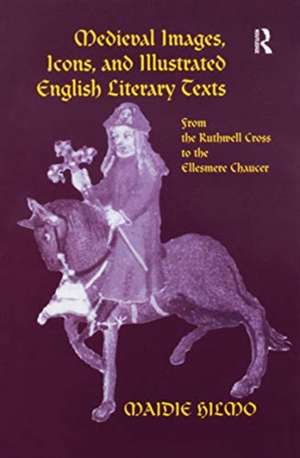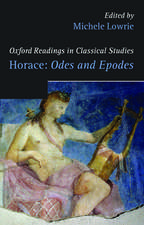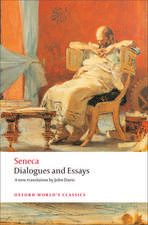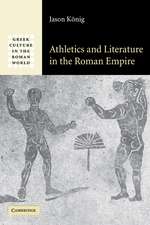Medieval Images, Icons, and Illustrated English Literary Texts: From the Ruthwell Cross to the Ellesmere Chaucer
Autor Maidie Hilmoen Limba Engleză Paperback – 28 noi 2016
| Toate formatele și edițiile | Preț | Express |
|---|---|---|
| Paperback (1) | 324.16 lei 6-8 săpt. | |
| Taylor & Francis – 28 noi 2016 | 324.16 lei 6-8 săpt. | |
| Hardback (1) | 767.07 lei 6-8 săpt. | |
| Taylor & Francis – 8 ian 2004 | 767.07 lei 6-8 săpt. |
Preț: 324.16 lei
Preț vechi: 416.92 lei
-22% Nou
Puncte Express: 486
Preț estimativ în valută:
62.03€ • 66.33$ • 51.72£
62.03€ • 66.33$ • 51.72£
Carte tipărită la comandă
Livrare economică 17 aprilie-01 mai
Preluare comenzi: 021 569.72.76
Specificații
ISBN-13: 9781138273184
ISBN-10: 113827318X
Pagini: 344
Dimensiuni: 156 x 234 mm
Greutate: 0.45 kg
Ediția:1
Editura: Taylor & Francis
Colecția Routledge
Locul publicării:Oxford, United Kingdom
ISBN-10: 113827318X
Pagini: 344
Dimensiuni: 156 x 234 mm
Greutate: 0.45 kg
Ediția:1
Editura: Taylor & Francis
Colecția Routledge
Locul publicării:Oxford, United Kingdom
Cuprins
Contents: Preface; Epigraph; Introduction, Kathryn Kerby-Fulton; Reading medieval images; Visual and verbal manifestations of the dual nature of Christ on the Ruthwell Cross; The wisdom and power of the creative word: images for meditation and transformation of self and society in late Anglo-Saxon England; The revival of the vernacular and the illustrated Caligula, Auchinleck and Vernon manuscripts; Creating a visual narrative of the spiritual journey to the New Jerusalem in the Pearl manuscript; Framing Chaucer's Canterbury Tales for the aristocratic readers of the Ellesmere manuscript; Bibliography; Indexes.
Notă biografică
Maidie Hilmo was the recipient of two prestigious dissertation awards for the study upon which this book is based. In 2002 she was awarded the Leonard E. Boyle Prize from the Canadian Society of Medievalists for the best PhD dissertation in medieval studies in Canada and also the Governor General's Gold Medal for graduating with the highest academic standing at the PhD level at the University of Victoria (British Columbia, Canada). She is the author of articles on late medieval illustrated literary manuscripts and the co-editor of two volumes on the medieval reading process, The Medieval Professional Reader at Work: Evidence from the Manuscripts of Chaucer, Langland, Kempe, and Gower (Victoria: English Literary Studies, 2001) and The Medieval Reader: Reception and Cultural History in the Late Medieval Manuscript (New York: AMS Press, 2001).
Recenzii
'... a very important examination of medieval vernacular book illustration... It is a 'must purchase' for the medieval studies library and a 'should purchase' for all scholarly art libraries serving advanced undergraduate, graduate students, and faculty.' Art Documentation '... a valuable resource for studying the intersections of medieval English literature and culture... offers much to think about and a useful model for ways of linking art and text.' The Medieval Review '... thoughtful and intriguing... offers a new understanding of many of these images and is a valuable contribution to the study of image/text relationships in manuscript culture.' Sharp 'In an age of ever-narrowing dissertation topics it is stimulating to come upon one that casts its net from the eighth century to the fifteenth and engages a broad range of texts, topics, and manuscripts... Throughout, this study vigorously addresses both old and some new questions and does so with evident attention, learning and insight... few recent scholars have addressed them with the passionate seriousness that is at the hear of this study.' Speculum
Descriere
This is the first study to cover the range of major illustrated English poems from the Anglo-Saxon period to the early 15th century. The author argues that the artists were familiar with the texts, flexible in adapting existing iconographies, and innovative in responding to the poems to guide the ethical reading process of their audience.



















